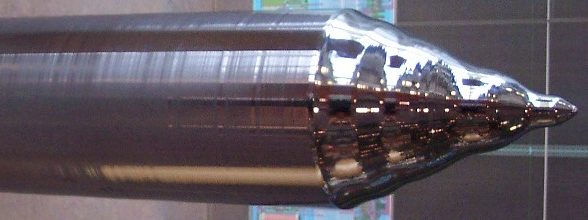Scientists from the Zhejiang University in China have investigated how Swirl defects arise in Czochralski (Cz) silicon wafers and have analyzed the correlation between these defects and the performance of solar cells built with this kind of wafers, which are the most commonly used in the PV industry.
Swirl defects are point defect agglomerates that can form in dislocation-free silicon crystals, which may have an influence on the uniformity of the electrical properties of Cz-Si cells. “The swirl-shaped region occurs most obviously in the solar cells fabricated by the wafers near the
shoulder of Cz-Si, whose influence still exists in the nearby wafers for a certain distance,” the scientists explained, noting that this phenomenon is often associated with hotspots and thermal breakdown.
The researchers used deep level transient spectroscopy (DLTS), which is a high‐frequency capacitance transient thermal scanning method useful for observing a wide variety of electrically active defects in semiconductors, to analyze the electrical parameters and properties of the Swirl defects in p-type Cz-silicon ingots embedded in defective solar cells. They compared, in particular, the properties of the defective cells with a swirl-shaped region with that of a reference cell with the same cell fabrication process but without a swirl-shaped region.
The performance of the cells was measured under standard radiation conditions through electroluminescence (EL), photo-induced current (LBIC), and quantum efficiency (QE) measurements. “The EL mapping of the defective cell shows a central dark circle and fading concentric
rings, indicating that the swirl-shaped region exhibits intensive recombination activity, which may be the major negative factor for solar cell performance”, they stated, noting that the defective devices exhibited lower open-circuit voltage, short-circuit current, and fill factor compared to the reference cells.

Image: Zhejiang University
The defective cells were found to be 4.7% less efficient than the reference cells, which indicates, according to the research group, that Swirl defects are highly detrimental to their performance.
The Internal Quantum Efficiency (IEQ) of the defective cells was also significantly lower than the reference device. “For the referential cell,
the normal IQE kept above 95% in the range of 500–900 nm, and then dropped due to the low absorptivity in the near-infrared wavelength,” the academics explained. “However, the IQE of the defective cell started rapid decrease at about 500 nm, and dropped by 55.4% in the range of 500–900 nm.” The IEQ defines the ratio between the number of charge carriers collected at either terminal of the cell and the number of photons reaching the device's photoreactive surface.
The defective cells were then further analyzed by annealing them at 1050 degrees Celsius for 16 hours. This analysis showed that Swirl defects occurring close to the ingot shoulder are related to oxygen precipitates formed during the crystal growth process. “The influence of
Swirl defects generally exists in the nearby wafers within a large distance of ingots,” the scientists emphasized. “Wafers featuring these defects can be sorted out from production based on carrier lifetime measurement and can be potentially remelted, the key is to lower oxygen concentration in the system, and avoid oxygen precipitate nucleation during the pulling process.”
These improvements, they went on to say, may further reduce cell manufacturing costs. “The presence of Swirl defects could be mitigated by applying a heat treatment at a temperature above 1,050 degrees Celsius in a clean environment before the manufacturing of the solar cells,” they concluded.
Their findings were presented in the paper Comprehensive characterization of efficiency limiting defects in the swirl-shaped region of Czochralski silicon, published in Solar Energy Materials and Solar Cells.
This content is protected by copyright and may not be reused. If you want to cooperate with us and would like to reuse some of our content, please contact: editors@pv-magazine.com.




Seems in IQE graph, Legends are mistakenly interchanged. Green one refers to Reference cell and Black one refers Defective cell, Where as in Graph its showing Opposite.